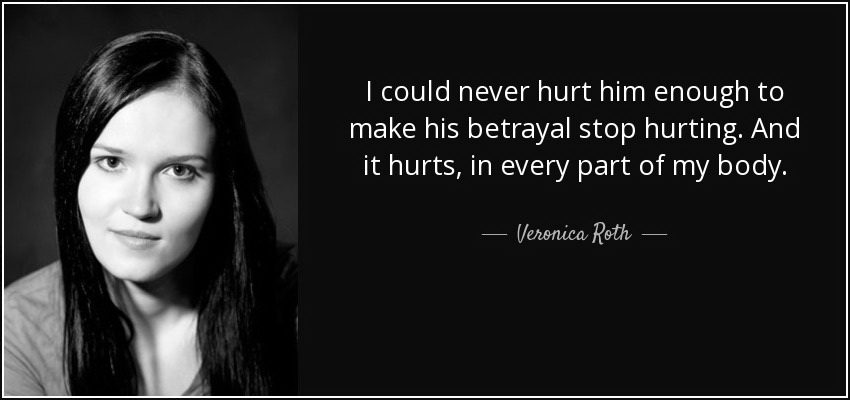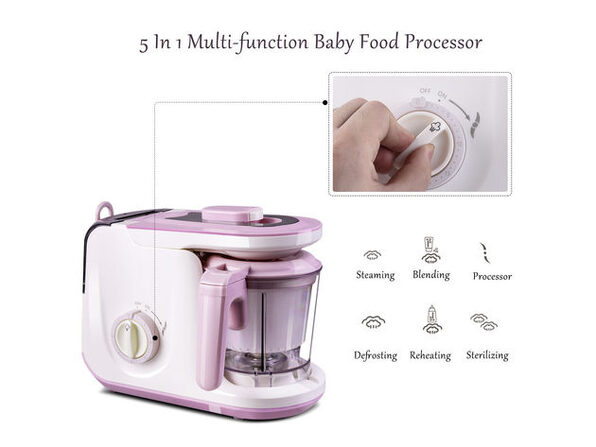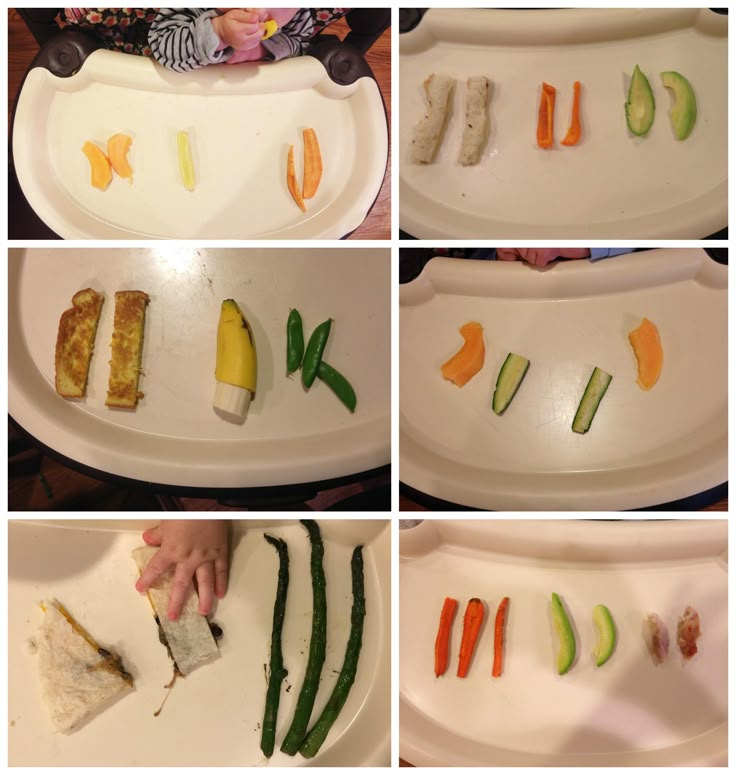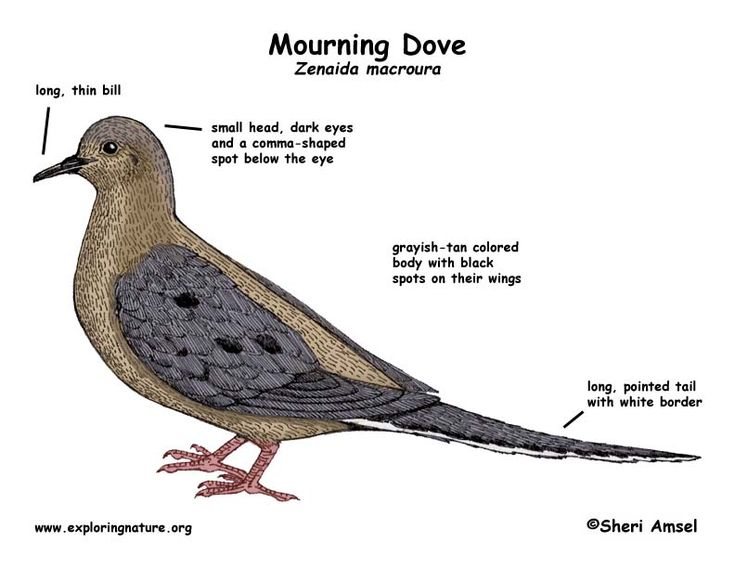How much food to feed a baby bird
Guide to Raising a Baby Bird
Hand-rearing a baby bird can be quite difficult and requires feeding every few hours by an experienced foster mom. On the other hand, purchasing just-weaned or about-to-be-weaned birds who have no problems and eat readily can be a very rewarding experience.
How Much to Feed
A baby bird should be eating 10 percent of its body weight per feeding. (A 500-gram bird would need 50 milliliters of formula per feeding). A baby this age should be fed approximately three times per day.
It’s important not to feed your bird if he still has food in his crop (the enlarged portion of the esophagus at the base of the neck) from the last meal. Food in the crop for more than three to four hours is a sign of crop stasis (slowing down) and could be the beginning of a bacterial or fungal overgrowth in the crop that can make your baby bird ill.
If you feed your bird too much at each meal, his crop can become overstretched and will lose its ability to move the food down through the digestive system.
You’ll need to weigh your bird on a gram scale daily. This will help you determine how much to feed your bird and it will help you monitor whether he’s gaining or losing weight, which can be a sign of your bird’s overall health.
What to Feed
Most baby birds thrive quite well on a commercial hand-rearing formula made especially for your species of bird. These complete diets are convenient since they’re easy to prepare. It’s important to mix these preparations as directed; do not add ingredients unless directed by your veterinarian. Formula that’s too thin won’t have the appropriate nutrients, and formula that’s too thick can become a hard ball in the crop and won’t be digested appropriately.
Formula Temperature
Formula should be fed at a temperature between 105 to 110 degrees Fahrenheit. Baby birds won’t eat food that’s too cold. Conversely, many babies have died from novice bird owners feeding formula that is too hot, which causes a severe burn to the crop. As a precaution, use hot tap water and keep a cooking thermometer in the food formula at all times. If you choose to warm the formula with a microwave, remember to stir it very carefully because there can be hot pockets of food within the mix. Take the temperature before and after stirring.
As a precaution, use hot tap water and keep a cooking thermometer in the food formula at all times. If you choose to warm the formula with a microwave, remember to stir it very carefully because there can be hot pockets of food within the mix. Take the temperature before and after stirring.
How to Feed
Your bird is used to being fed by his human foster mom at the pet store or the aviary. Ideally, you should receive instructions from this person and copy his or her technique as closely as possible.
Spoon-feeding is just as it sounds. Gently stretch your birds neck straight up and support the head with one hand, with your thumb and forefinger placed gently at either side of the upper beak close to where it comes out of the skin. With the other hand, tilt the spoon of formula. Allow your bird to swallow and continue in this manner until he’s received the appropriate 10 percent.
When syringe-feeding, support your baby bird’s head in the same manner as when spoon-feeding and place the syringe in the side of his mouth, aiming towards the back of his throat. As he opens his throat, give him the formula. Practice with the syringe first because it’s common for too much to squirt out suddenly.
As he opens his throat, give him the formula. Practice with the syringe first because it’s common for too much to squirt out suddenly.
Also remember that your bird has to breathe at some point, so if you’re putting food in his mouth for more than a few seconds at a time, he may aspirate food into his lungs.
Be careful with babies that bob for their food vigorously. It’s easy to injure the back of the throat with the syringe tip when these little ones are aggressively bobbing for food.
Hand-Feeding Baby Birds | VCA Animal Hospital
General Information
Hand-feeding baby birds is only a substitute for parents raising birds, but it does have certain advantages. Hand-raised baby birds usually make better pets, as they have been completely socialized with humans. Hand-raised babies grow up with less fear of humans or other potential dangers such as cats, dogs and young children. Hand-feeding is a huge responsibility and requires time, patience, and commitment.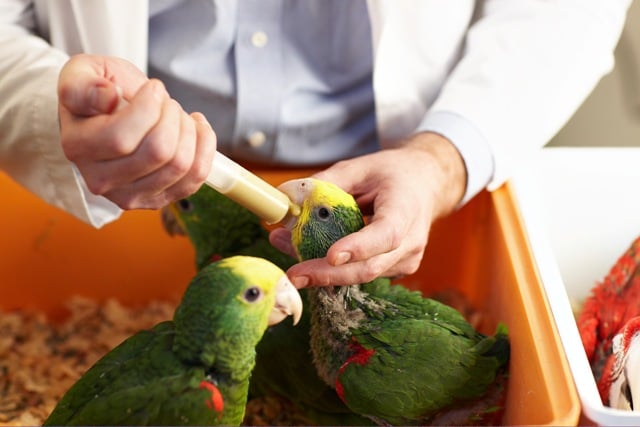 Hand-fed baby birds are entirely reliant on you for everything. Hand-feeding is a job best left for the experienced bird breeder or aviculturist. If you’re considering hand-feeding a baby bird, you should contact your local bird breeder or veterinarian for help. This handout is designed to provide some basic guidelines on how to hand-feed.
Hand-fed baby birds are entirely reliant on you for everything. Hand-feeding is a job best left for the experienced bird breeder or aviculturist. If you’re considering hand-feeding a baby bird, you should contact your local bird breeder or veterinarian for help. This handout is designed to provide some basic guidelines on how to hand-feed.
When do I start hand-feeding a baby bird?
A chick may be removed from its parents any time before weaning, but many suggest leaving the babies with the parents for up to 3 weeks. Older birds may prove to be more challenging in their acceptance of hand-feeding.
Where do I keep a baby bird?
Precise temperature and humidity is essential for optimum growth of newly hatched birds. Initially, relative humidity greater than 50% is required. Hatchlings (without feathers) should be maintained at 95°-97°F (35°-36°C). As the chick gets older and develops feathers, it has a greater tolerance for temperature fluctuations.
Generally, the temperature can be lowered by one degree every 2-3 days as feathering progresses. Chicks with new feathers (pinfeathers) should be fine at 75°-85°F (24°-30°C) depending on the development of the feathers. Fully feathered and weaned chicks can be maintained at room temperature. If you are raising a chick, always monitor your bird for signs of overheating or chilling. Wings extended or drooping, and panting indicate overheating. Shivering and cuddling of chicks together indicate that they’re cold.
Chicks with new feathers (pinfeathers) should be fine at 75°-85°F (24°-30°C) depending on the development of the feathers. Fully feathered and weaned chicks can be maintained at room temperature. If you are raising a chick, always monitor your bird for signs of overheating or chilling. Wings extended or drooping, and panting indicate overheating. Shivering and cuddling of chicks together indicate that they’re cold.
Poor growth or poor digestion (delayed crop emptying) may indicate poor health (including presence of gastrointestinal tract infections), improper consistency/mixing of hand feeding formula, improper temperature of formula, or improper environmental temperature and humidity. Good quality brooders are available that carefully regulate air circulation, temperature, and humidity. Paper towel, diapers, hand towels, or other soft, disposable products can be used to line the bottom of the brooder and provide secure, clean, dry footing for birds. The bottom liner must be changed frequently to keep birds clean. If the bottom texture is too smooth, chicks’ legs may splay out sideways, leading to permanent deformities. The brooder should be carefully checked to ensure that it does not contain anything for birds to get their wings or legs stuck on or that might cause injury or deformities.
If the bottom texture is too smooth, chicks’ legs may splay out sideways, leading to permanent deformities. The brooder should be carefully checked to ensure that it does not contain anything for birds to get their wings or legs stuck on or that might cause injury or deformities.
What should I feed my bird?
There are numerous commercially available hand-feeding formulas for baby birds. You should choose one formula and use it until the baby is weaned. Changes in diet may be stressful on the baby's digestion. Be sure to discuss dietary choices with your veterinarian, an experienced bird breeder, or an aviculturist.
How do I feed my baby bird?
All food must be prepared fresh for every feeding. Food retained from one feeding to another is an ideal medium for the growth of harmful bacteria and yeast. Any food prepared or heated in a microwave oven must be mixed thoroughly to ensure that the food’s temperature is uniform and that there are no hot or cold spots. Food temperature should be at 102°-106°F (39°-41°C) throughout the mixture and should be measured with a thermometer.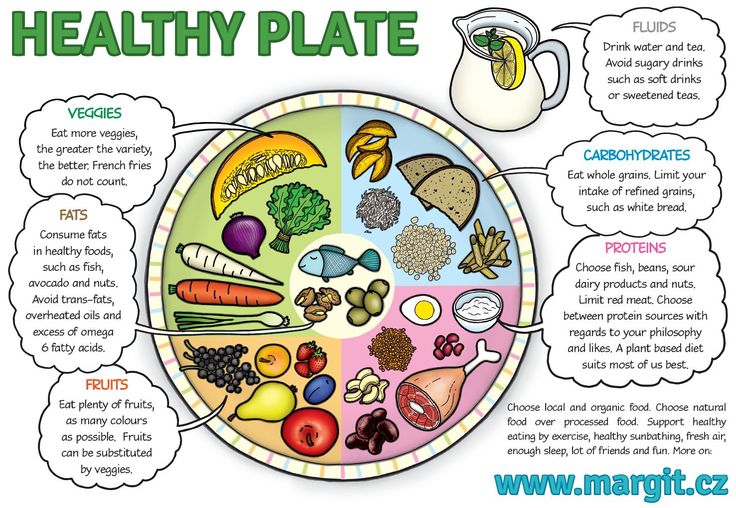 Food that is too hot may cause severe burns to the crop.
Food that is too hot may cause severe burns to the crop.
Food that is too cold may be rejected by baby birds and may slow down digestion. Hand-feeding formulas have specific directions on the packaging and explain how they should be mixed.
In general, the younger the bird, the thinner the mixture should be. A day-old chick requires a more dilute mixture (90% water), as it is still utilizing the yolk sac as a source of nutrition. Chicks older than one or two days, should have food containing approximately 70-75% liquid.
"All food must be prepared fresh for every feeding."
Syringes are probably the preferred feeding tool, but some bird owners still prefer a spoon with the sides bent up and inward. Accurate feeding volumes can be recorded with the syringe. Charting daily feedings is important. The natural feeding response of a baby bird is to rapidly bob the head in an up and down motion. This action can be stimulated with gentle finger pressure at the corners of the mouth.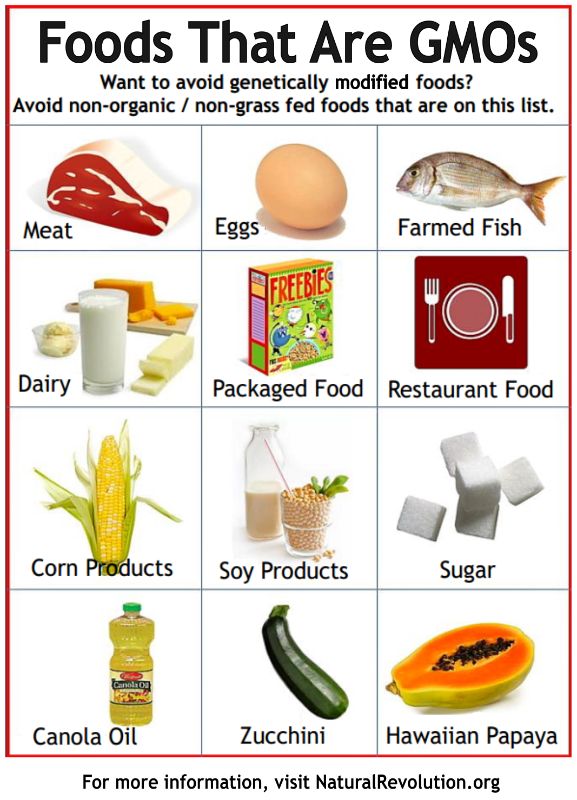 During this head bobbing, the trachea is closed and large amounts of food can be given relatively quickly.
During this head bobbing, the trachea is closed and large amounts of food can be given relatively quickly.
If the bird is not displaying a strong feeding response, do not attempt to feed as there is an increased chance of aspiration of food into the trachea and lungs which can lead to death. The best time to feed is when the crop is empty. When full, the crop, which is the sac that hangs over the front of the chest at the base of the neck, will be visibly distended.
How often and how much do I feed?
The amount and frequency of feeding depends on the age of the bird and the formula fed. The frequency of feeding for young birds is greater than that of older birds. The following are general guidelines. With newly hatched chicks, the yolk sac is the source of nutrients for the first 12-24 hours post-hatching. Chicks less than one week old should be fed 6-10 times per day (every 2-3 hours).
During the first week of life, some birds benefit from feeding during the night. Chicks that have not yet opened their eyes may take 5-6 feedings per day (every 3-4 hours). Once birds’ eyes open, they can have 3-5 feedings (one every 5 hours). As their feathers start to grow in, they may be fed 2-3 times per day (every 6 hours). Their crops should appear full when they’re done.
Chicks that have not yet opened their eyes may take 5-6 feedings per day (every 3-4 hours). Once birds’ eyes open, they can have 3-5 feedings (one every 5 hours). As their feathers start to grow in, they may be fed 2-3 times per day (every 6 hours). Their crops should appear full when they’re done.
Feeding between 10:00 p.m. and 6:00 a.m. is not necessary at that point when birds are sleeping. The best indication of a healthy, growing chick is a good, strong feeding response at every feeding, with the crop emptying between feedings, and the regular production of droppings (feces). Weight gain should be monitored and recorded at the same time each day using a scale that weighs in grams with 1-gram increments to detect subtle increases or decreases. Birds’ weights may fluctuate up and down daily but should trend upward over a period of days to weeks. Birds that are not gaining weight should be checked by a veterinarian as soon as possible.
When should birds be weaned off hand-feeding formula?
Deciding when to wean a bird off of formula is often a difficult decision for both the bird owner and the bird. As a bird gets older and develops a full complement of feathers, it should be encouraged to wean off formula and to eat more on its own. Some babies start weaning themselves by refusing certain feedings.
As a bird gets older and develops a full complement of feathers, it should be encouraged to wean off formula and to eat more on its own. Some babies start weaning themselves by refusing certain feedings.
Birds should be offered a variety of foods including formulated pelleted diets as well as fresh fruits and vegetables to encourage exploration and experimentation. As food introduction continues, hand-feeding may be withheld at certain times, often starting with the mid-day feedings. As time goes on, the morning feeding may be withheld and ultimately the evening feeding. Some birds learn quicker to eat on their own by watching other birds or older babies eat.
Should I be concerned about disinfection?
Baby birds have poorly developed immune systems and are more susceptible to developing infections. The brooder should be disinfected regularly. All feeding utensils must be cleaned, disinfected, and dried thoroughly between feedings. Using separate feeding utensils for every individual bird is recommended.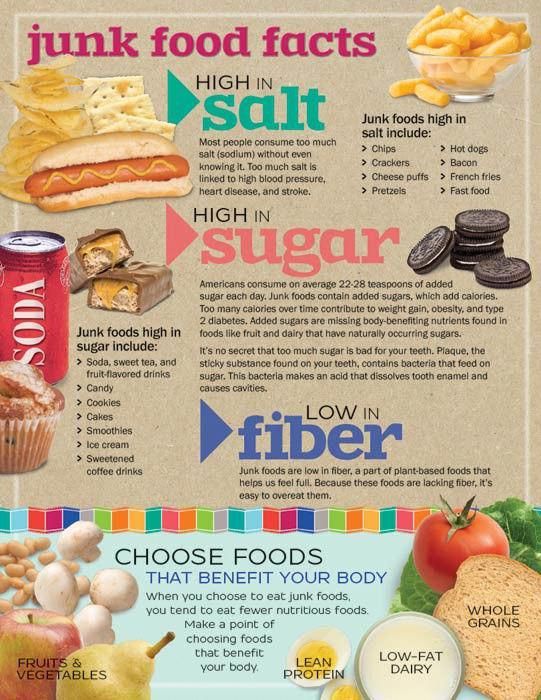
How do I know if something is wrong?
If you suspect something is wrong with your bird, you should immediately contact your veterinarian. Signs to watch for include:
- Chirping or crying all the time
- Fussing a lot and not sleeping
- Listless, droopy wings or head
- Not accepting food
- Lack of feeding response
- Slow or lack of crop emptying
- Poor weight gain
- Slow growth
- Abnormal posturing or abnormal wing and/or leg positions
- Abnormal or lack of droppings
- Wetness or food on skin over the crop (indicating a possible burn)
How to feed the found chick, how many times a day
If you find a chick, the first thing you need to do is determine its species. Feeding granivorous, insectivorous and predatory chicks have their own differences. But in the early stages of feeding, you can use the same feeding methods, and then, after finding out what kind of bird you found, transfer the chick to the appropriate feeding.
Here is one of the most common feeding options for granivorous and insectivorous chicks. This nutrient mixture is well used for feeding for chicks and fledglings from the passerine family. To prepare our mixture, we need the following products: Boiled egg, low-fat cottage cheese, raw carrots, meat (beef, chicken, turkey), greens (lettuce, dandelion leaves, wood lice), hamarus and daphnia, Calcium gluconate (shell from boiled eggs) glycerophosphate , children's dry dairy-free porridge or boiled millet (without salt and fat on the water).
Action one. Boil the egg, free from the shell. We free the shell from the shell film. Grind the egg as much as possible, you can use a grater with small holes.
Second step. Boiled meat, it is better to take the pulp from the breast of a turkey or chicken and also chop or divide into fibers. The mixture will require meat 40 (for granivorous) and 60 grams (for insectivorous).
Third step. Take washed carrots of a small size, grate them on a fine grater, then squeeze the juice and we will use the remaining pulp.
Fourth step. We take not sour and not fatty cottage cheese. Cottage cheese should have 0% fat content, anything above is considered fat for poultry. We need 90-110 grams of cottage cheese. Sour cottage cheese must be boiled twice changing the water and then it will be suitable.
Step five. You can use greens to add the mixture, but you can do without it for the chicks. And so you can take the greens listed above, chop and add 1.5 teaspoons to the mixture.
Action six. To the above ingredients, add 1.5 -2 tsp. dairy-free porridge or boiled millet (well boiled, without salt and fat in the water).
Step seven. To the mixture we add the shell from the boiled egg, which must first be ground in a coffee grinder, plus one fourth of the crushed tablet of glycerophosphate. If it is not possible to find glycerophosphate, then you can purchase bone meal and add one fourth tsp. in powder form. At the very least, the shells are enough for now.
Step eight. We take chopped hamarus and daphnia and add about 1 tsp to the resulting mixture.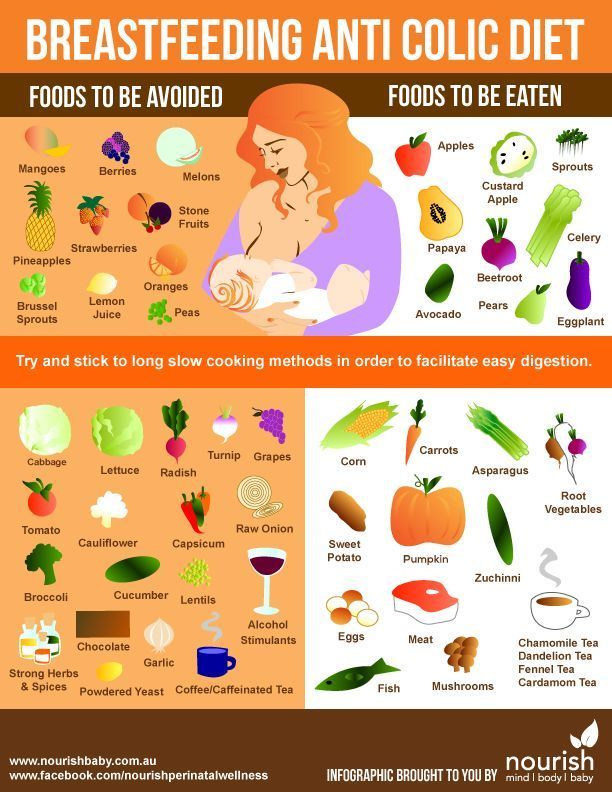 Then we mix everything, it turns out a very thick, crumbly porridge, it should not stick to the fingers. If the mixture is sticky, you can add dairy-free porridge or powdered cereals.
Then we mix everything, it turns out a very thick, crumbly porridge, it should not stick to the fingers. If the mixture is sticky, you can add dairy-free porridge or powdered cereals.
From the resulting mixture we roll small balls no larger than a small pea, focus on the size of the chick's beak. You can feed 2-5 balls at a time and after each feeding drink plain water from an insulin syringe with a removable needle (without a needle) 4-6 drops. A week-old chick should be fed every 1-1.5 hours, older than two weeks of age every 2-4 hours, at three and four weeks of age you can feed 3-4 times a day. Do not forget that the chick is growing and, accordingly, one-time portions of food are growing. A very important point, do not forget to warm the chicks, because at their age they themselves cannot maintain normal body temperature. Warming up promotes better assimilation of feed. Don't forget to control your chick's weight. If possible, show the chick to a specialist. To control the work of the intestines, you can take the litter from the chick for a coprogram, this is an analysis of the digestibility of the feed.
Take care and love your feathered friends and they will love you back.
Veterinarian ornithologist
Chuguevsky VV
Veterinary clinic Bambi.
You can ask an ornithologist on the forum.
diet in the first days of life, chicken feed norms
| The diet of chickens, especially small ones, is different from the diet of adult chickens. Many breeders who raise chickens in the household are interested in how and what to feed the chicks so that they develop properly. For healthy growth, chickens require a balanced diet in sufficient quantities. The composition of the products depends on the direction and age of the chicks. |
Content:
- What does healthy chicks eat?
- General rules for formulating rations
- What to feed chickens?
- General rules for feeding
- Feed for chicks of all ages
- Feeding frequency
- Feeding Features
- Farmers' Councils
What does healthy chicks eat?
Sources of proteins, vitamins, micro and macro elements are products of plant and animal origin, as well as substances synthesized in the laboratory. For the production of finished formulations in the factory, only high-quality proven raw materials are used. In feed for laying hens and broilers are introduced:
For the production of finished formulations in the factory, only high-quality proven raw materials are used. In feed for laying hens and broilers are introduced:
|
It is quite difficult to independently calculate the proportions and mix the components thoroughly without the appropriate equipment.
General dietary guidelines
The terms of growing meat breeds are 1.5-2 months, laying hens - up to six months. During this time, the bird should gain weight of 2.5-3 kg. To accelerate the growth of muscle mass in broilers, it is recommended to use specialized feed. It fully meets the needs of the bird in proteins, fats, carbohydrates, vitamins and minerals. The composition and consumption of feed should be appropriate for the age of the chicks.
At 1-2 weeks of life, the foundation of the skeleton is laid in chickens, muscle mass increases at an average pace. At this time, it is necessary to introduce a sufficient amount of proteins, fiber, and mineral components into their diet.
In the growth phase, chickens are gaining weight intensively. They need as many amino acids and proteins as possible, which act as a building material for cells, as well as complex carbohydrates. The dose of vitamins and minerals received with food is increased.
At the finishing stage, the amount of carbohydrates is reduced so that the broilers gain more muscle mass, and not fat. At this stage, it is important to prevent weight loss. For these purposes, finishing compound feed is introduced into the diet.
What to feed chickens?
Cereals form the basis of the diet.
| Corn | One of the most useful and nutritious ingredients. Corn is the leader among grains in terms of protein content, while it contains less fiber than other cereals. The product is easily digested and well absorbed. The product is easily digested and well absorbed. |
|---|---|
| oats | Source of many amino acids. It is considered a dietary product, but contains a lot of fiber. In large quantities, it causes blockage of the intestines, so its share in the composition of the feed does not exceed 20%. Oats are given in a purified form, completely removing the film from the grains. The size of the fraction depends on the age of the bird. Sifted oatmeal is usually added to prestarter formulations. |
| Wheat | Contains a large amount of vitamin E, B. Feed wheat is usually used in bird feed. The percentage can be up to 30%. |
| Rye | It is a source of a number of useful proteins, but contains too much mucus, which negatively affects the digestive system of chickens. It is added to some feeds in small quantities. |
| Barley | Practically not inferior to oats in useful properties, but also contains a lot of fiber. It is introduced into the composition only in a purified and sifted form. It is introduced into the composition only in a purified and sifted form. |
| Buckwheat | Despite the fact that the product contains components useful for poultry, it is rarely used. Basically, it is added to granulated feed, because. in loose form, chickens do not peck it. |
| Bran | Products of processing grain crops are introduced to increase the caloric content of the diet. By themselves, they have no nutritional value, so they are rarely used. |
Peeled vegetables are used as succulent feed.
| Potato | Improves poultry digestion, promotes the absorption of nutrients. It is introduced in boiled dehydrated form. In the process of preparing food, it is unacceptable to use green potatoes, since poisonous solanine has formed in them. |
|---|---|
| Beet | It normalizes the work of the intestines, prevents its blockage, provides the needs of chickens for vitamin B2, carotene, sugar.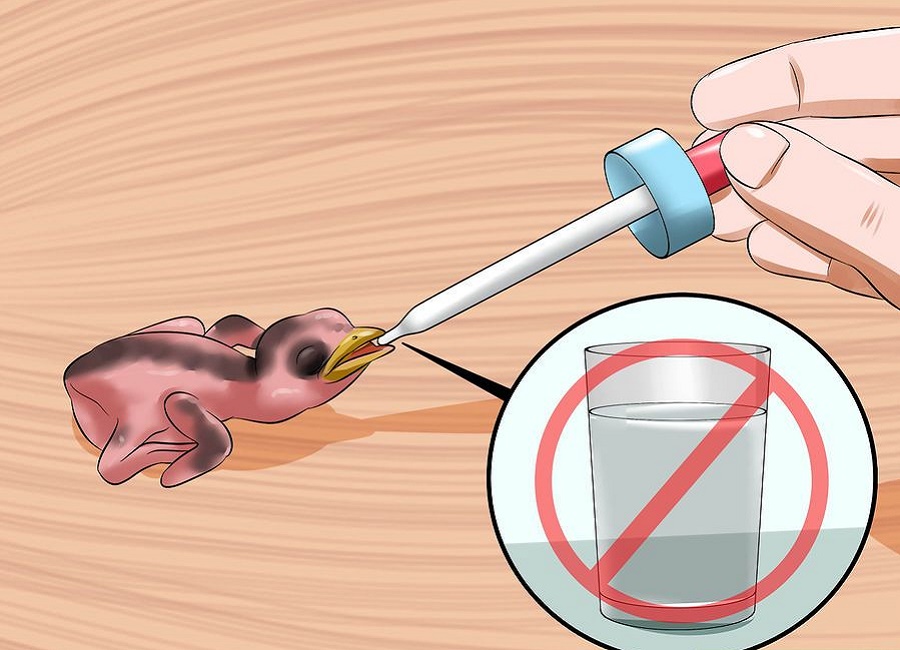 It can be given both fresh and boiled. The content of beets in the diet is about 15%. It can be given both fresh and boiled. The content of beets in the diet is about 15%. |
| Pumpkin | It contains a lot of vitamins and microelements. The product is added in an amount not exceeding 15% of the total volume. |
Protein components provide the daily requirement for amino acids. Protein sources are also rich in vitamins and minerals. They can be of plant and animal origin. Amino acids are well absorbed by the body. Animal proteins are obtained from various types of flour:
- fish. This product makes up to 8% of the diet, but is not used in broiler feed so that the meat does not have a specific smell;
- bone. In terms of the amount of proteins, it is not inferior to cereals, and at the same time it is rich in fats (11%) and vitamins A and E. It is given to chickens from a month old;
- blood. The product is rich in essential amino acids, but in high concentrations it provokes indigestion.
 Its share in the diet should not exceed 4%;
Its share in the diet should not exceed 4%; - pen. This component is used as an available source of protein to balance the feed composition. It is added in small amounts (up to 2%).
Dairy products are also a source of well-digestible animal protein: cottage cheese or whey. Their inclusion in feed mixtures for laying hens increases the egg production and fertility of chickens.
Legumes are richest in vegetable proteins:
- soy in terms of percentage and qualitative composition of proteins and amino acids is practically not inferior to products of animal origin, it also contains vitamins and minerals;
- peas also provide the protein requirements of poultry, although to a lesser extent; chickens do not eat it well because of the specific smell and taste, therefore, no more than 10% is introduced into the feed;
- soybean and sunflower meal and cake are an inexpensive, highly digestible source of amino acids. In compositions for adult chickens, their share is 15-17%, for chickens and young animals - 10%.

General feeding rules
| Each individual should consume approximately 15-30 g of food per day: how much depends on the breed, weight of the chicks, and the intensity of their development. In general, the amount of feed each time should be such that the young hens will eat it in 30 or 40 minutes. The remains must be removed from the feeders so as not to deteriorate, and the feeders themselves must be washed and dried. |
If the chicks do not eat the feed given to them often, then its rate should be reduced. If, on the contrary, the food is eaten quickly, then it is desirable to increase its volume.
Feed for chickens of various ages
| PC-2 | Designed for chicks under 7 weeks old. It is produced in the form of finely ground grains, designed for an insufficiently unformed digestive system, easily digestible, contains all useful trace elements. |
|---|---|
| PC-3 | Balanced mix for young animals 8-20 weeks old. Promotes rapid growth and proper formation of the reproductive system. It is produced in the form of grains with medium-sized fractions. |
| PC-5 | Designed for broiler chickens from 2 weeks to 1 month of age. It consists of a complex of easily digestible components that stimulate a set of muscle mass. |
| PC-6 | It has similar characteristics, but is designed for broilers older than a month. |
All types of feed can be divided into three groups:
| carbohydrate | Protein | Vitamin |
|---|---|---|
Promote accelerated growth and muscle mass gain. Their composition is dominated by cereals and vegetables. Chickens digest foods high in carbohydrates well, which cause a slowdown in metabolism and rapid weight gain. Such feeds are designed for broilers and increase the average carcass weight. | Such compound feeds are developed mainly for laying hens. A large amount of protein increases the productivity of the bird, improves the palatability of the eggs, and makes the shell stronger. | Strengthen the immune system, help to survive the winter period. Usually produced in the form of concentrates, which enrich the main diet. |
According to the form of release, the compositions are of 2 types.
| Loose ones consist of fine-grained components. The disadvantage of such compositions is that they are worse absorbed. The chicken chooses tasty crumbs from the feed, and the less appetizing ingredients are thrown away. As a result, the bird receives less nutrients. In addition, a lot of dust remains in the feeder. However, it is impossible to completely abandon loose compositions. Chickens in the first weeks of life are not able to swallow and digest large granules, therefore they can peck only small grains. |
Expanded feed is produced by short-term heat treatment under high pressure. Nutrient mixtures are in the form of granules and contain liquid components in their composition. The advantages of expanded compositions include:
However, when heated, some of the vitamins are destroyed. |
Feeding frequency
The first time chickens are fed on the same day they are born. Then, until the age of 7 days, the chicks of meat breeds are fed 6-8 times a day, from the 2nd week of life - 6 times, from the 3rd - 4 times a day, by the age of one month, chickens are fed three times a day. Chicks of egg breeds up to 1.5 weeks are fed 5-6 times a day, and by the month they are gradually transferred to 3 meals a day.
Chicks of egg breeds up to 1.5 weeks are fed 5-6 times a day, and by the month they are gradually transferred to 3 meals a day.
When choosing a mixture, it is recommended to give preference to complete formulations. However, if the breeder has enough of his own food, you can limit yourself to concentrated additives to enrich it. Such compositions are marked with the QC marking. Concentrates for meat and egg-bearing breeds solve different problems:
| for broilers | for laying hens |
|---|---|
|
|
It is unacceptable to use concentrates as the main feed, since an excess of nutrients is no less harmful than their deficiency.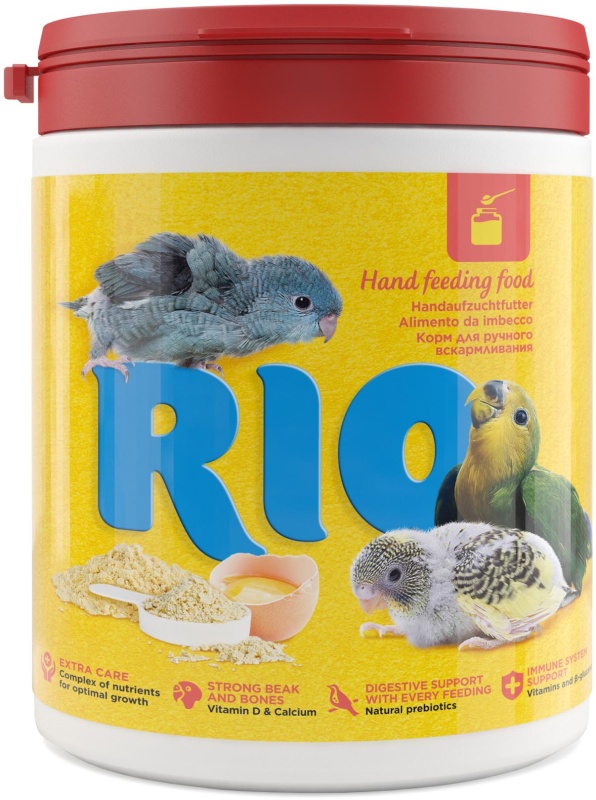 BVMB is introduced into the composition of the mash, taking into account the age of the chickens.
BVMB is introduced into the composition of the mash, taking into account the age of the chickens.
Feeding Features
| 1st day of life | Feeding of chickens of egg breeds begins immediately after they dry out. The first food for newborn chickens should be a hard-boiled egg. It is cut as small as possible so that the chicks can swallow small crumbs and roll it in semolina to prevent pieces from sticking to the paws and fluff. In the brooder where they are, they put a drinker with clean, boiled and cooled water. Newly hatched chicks are also fed boiled eggs under the brood hen. |
|---|---|
| 2nd day | On the 2nd day, the chicks are already given a mash of eggs and homemade low-fat fresh cottage cheese (the ratio of ingredients is 1 to 1). The formula for feeding day-old chicks should be fresh and fed every 3 hours. |
| 1 Week | From the 3rd day, chickens are fed with a more varied mixture of cottage cheese, boiled eggs, crumbly porridge from corn, oat or wheat chips (the share of cereals should be 65%).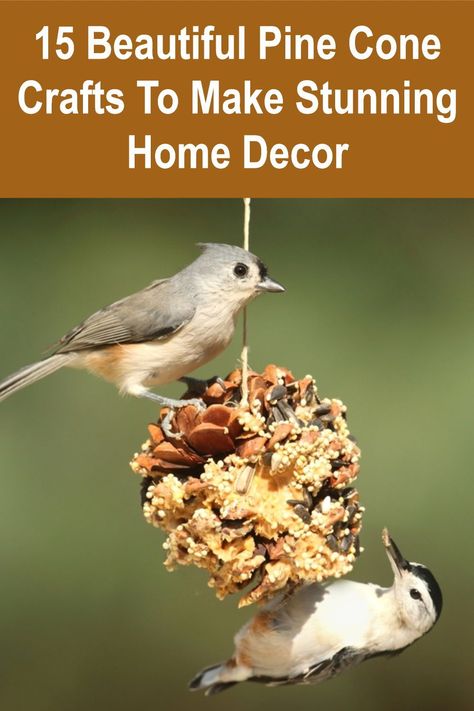 Finely chopped greens and boiled red carrots grated on a fine grater are added to them. You can give germinated grain or grass flour at the rate of 2-3 g per chicken per day. More than 5 g of such flour cannot be fed due to the high content of fiber in it. Separately, a little skimmed milk or yogurt is poured into the container; it is better not to add them to the mixers. Twice a week, a few crystals of potassium permanganate are added to the water so that it becomes slightly pink. Keep it in drinkers for no more than 0.5 hours, and then replace it with clean water. This protects chickens from stomach diseases. You can feed the chicks with special industrial compound feed for chickens from the first days of life. It is made up of products that are easily absorbed by the body of small chickens and fully satisfy all their needs. Finely chopped greens and boiled red carrots grated on a fine grater are added to them. You can give germinated grain or grass flour at the rate of 2-3 g per chicken per day. More than 5 g of such flour cannot be fed due to the high content of fiber in it. Separately, a little skimmed milk or yogurt is poured into the container; it is better not to add them to the mixers. Twice a week, a few crystals of potassium permanganate are added to the water so that it becomes slightly pink. Keep it in drinkers for no more than 0.5 hours, and then replace it with clean water. This protects chickens from stomach diseases. You can feed the chicks with special industrial compound feed for chickens from the first days of life. It is made up of products that are easily absorbed by the body of small chickens and fully satisfy all their needs. |
| 2-4 weeks | From 1.5 weeks of life, a little sunflower or soybean meal (3-4% of the total food volume), chalk or shells, bone meal (5-7% of the feed amount or 2-3 g per 1 chick).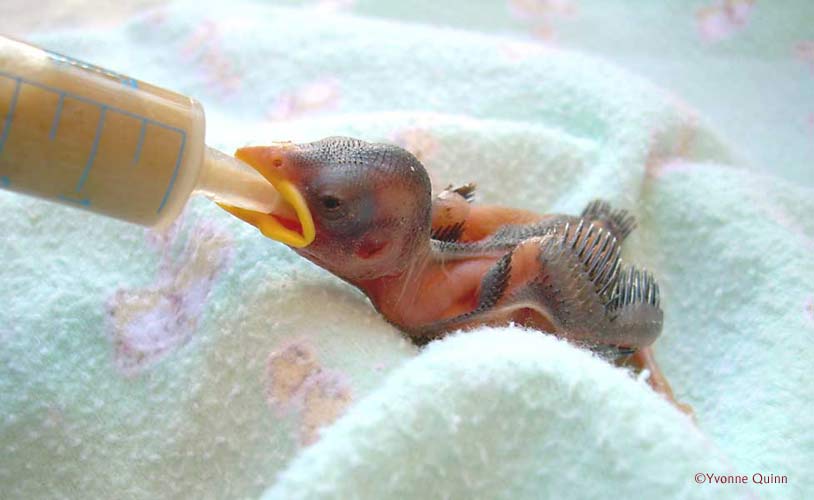 Particles of top dressing should not be more than 1-2 mm. Very fine gravel or sand washed in water is placed in a separate container. After 10 days, eggs are removed from the diet, but other components are introduced, for example, root crops (boiled potatoes, etc.). Salt, rice, rye, wheat bran (up to 10%), herbal flour (6-10%) are introduced into the menu of two-week-old chickens. From 3 weeks old, chicks gradually begin to accustom themselves to whole grains. Particles of top dressing should not be more than 1-2 mm. Very fine gravel or sand washed in water is placed in a separate container. After 10 days, eggs are removed from the diet, but other components are introduced, for example, root crops (boiled potatoes, etc.). Salt, rice, rye, wheat bran (up to 10%), herbal flour (6-10%) are introduced into the menu of two-week-old chickens. From 3 weeks old, chicks gradually begin to accustom themselves to whole grains. |
| 1 month | At this age, the young are already quite strong, they can spend time walking, where they independently find greenery, seeds of various plants, worms and beetles. If the birds are in a closed aviary and cannot pluck the grass, then they need to be given it along with grain and vegetables. In general, the share of green grass in the diet of one-month-old young animals should be about 1/3 part, no less. Grain can be given both ground and whole: the birds are already able to peck it. It can be anything: wheat, barley, corn, oats, etc. At this age, legumes can also be fed: peas, chickpeas, small beans, etc. In addition to grain products, you can feed root crops, fresh or boiled, to monthly chickens, vegetables from the garden and their tops, kitchen waste of both plant and animal origin, bran, meal and cake, compound feed. From mineral additives - bone and fish meal, chalk or lime, shell rock, salt. In addition to food, young animals should always have clean water in drinking bowls and pebbles, which the bird needs for normal digestion. At this age, legumes can also be fed: peas, chickpeas, small beans, etc. In addition to grain products, you can feed root crops, fresh or boiled, to monthly chickens, vegetables from the garden and their tops, kitchen waste of both plant and animal origin, bran, meal and cake, compound feed. From mineral additives - bone and fish meal, chalk or lime, shell rock, salt. In addition to food, young animals should always have clean water in drinking bowls and pebbles, which the bird needs for normal digestion. |
Chickens of meat breeds differ from egg breeds in that they need more complete proteins and vitamins, so their diet should be tailored to this feature. Therefore, it is necessary to give more protein feed, such as legumes (grains and green mass), meat and bone and fish meal, fresh kitchen waste. It should also be borne in mind that they eat more, so they need to be fed more often, especially in the first days of life.
Farmers' councils
When changing nutrition, the sensitivity of chickens to changes in composition should be taken into account.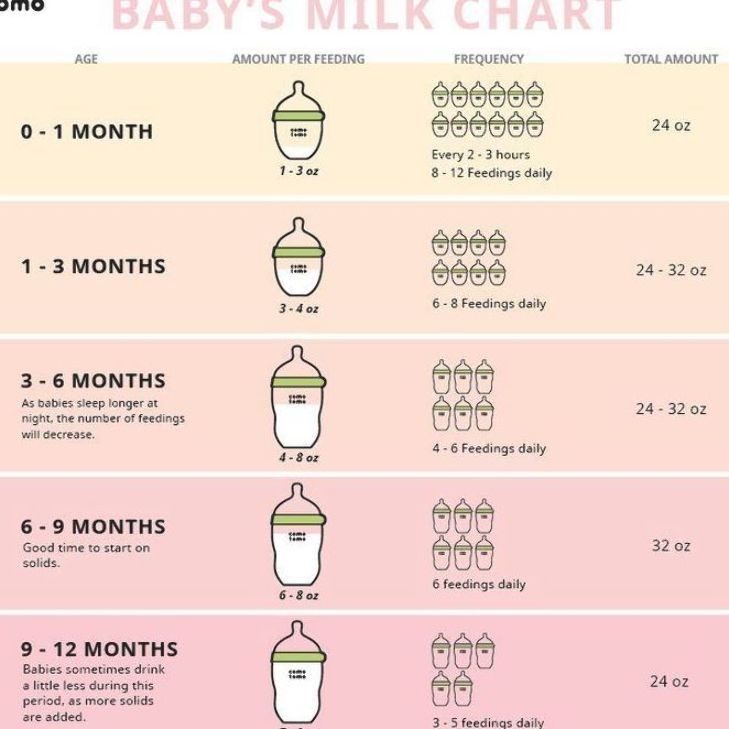 For this reason, birds should be transferred to a different diet gradually, over 3-5 days, daily adding new food to the usual food, gradually increasing its amount.
For this reason, birds should be transferred to a different diet gradually, over 3-5 days, daily adding new food to the usual food, gradually increasing its amount.
There should always be fresh water in the drinker, in which a little potassium permanganate is diluted - so much so that the liquid does not turn pink.
It is advisable to mix common salt (up to 5 g per 1 kg of the mixture) and ground egg shells into the feed.
The main disadvantage of self-prepared mixtures is the fragility of their storage. In contrast, prepared feed can be left in the feeder for as long as the chicks need to saturate.
In our company, you purchase safe, certified mixtures with high nutritional value. Products exceed the requirements of GOSTs in quality. At your request, it is possible to develop an individual recipe for specific chicken breeds.
The MEGAMIX company cooperates with a network of dealers in Moscow and regions. You can clarify the terms of the order and delivery by phone +7 (8442) 97-97-97 or on our website.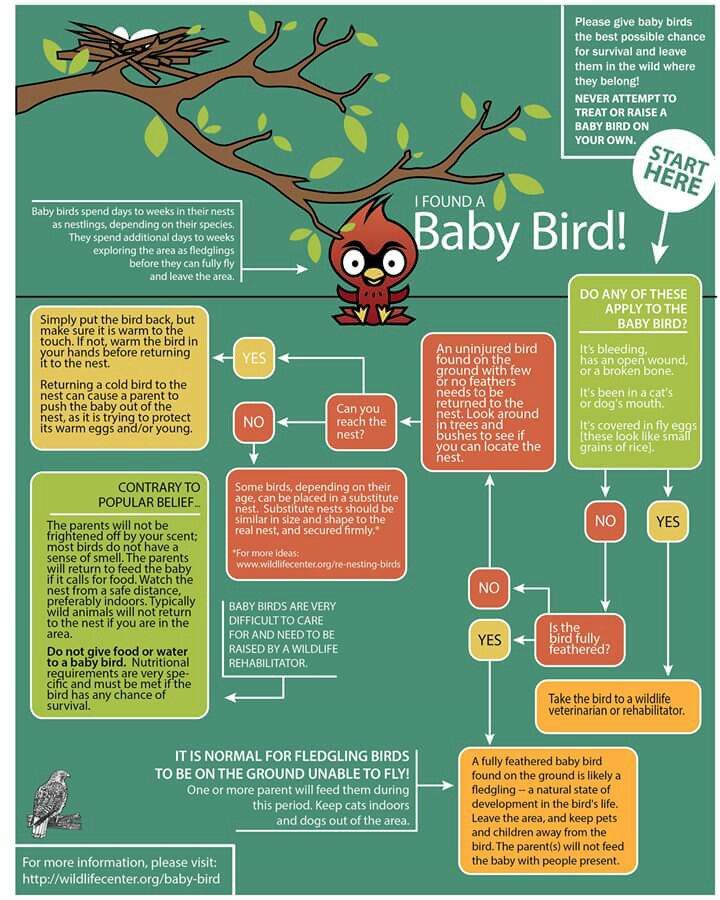

 For broilers, loose compound feed can be introduced into the diet from the first days of life, and for laying hens - from the second week. When using dry mixes, it is important to provide the hens with sufficient drinking water.
For broilers, loose compound feed can be introduced into the diet from the first days of life, and for laying hens - from the second week. When using dry mixes, it is important to provide the hens with sufficient drinking water. 